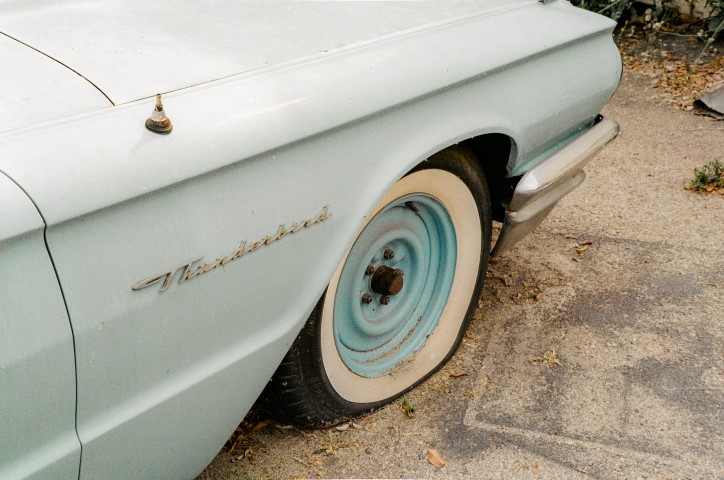 Low tire pressure can be difficult to diagnose if you don’t know what to look for when examining your car. Tire pressure can fluctuate throughout the day due to something as simple as the weather. There may be other external and internal factors as well, causing your tire pressure to dip below regular levels.
Low tire pressure can be difficult to diagnose if you don’t know what to look for when examining your car. Tire pressure can fluctuate throughout the day due to something as simple as the weather. There may be other external and internal factors as well, causing your tire pressure to dip below regular levels.
Identifying underinflated tires can be complicated to the untrained eye. Since the symptoms are often so subtle, most drivers may not be able to detect low car tire pressure visually. It will require some automotive knowledge, a tire pressure monitoring system and expertise in order to identify when your car’s tire pressure is too low
Before driving, you should always make sure your car tires are functioning properly. Otherwise, this can lead to danger to yourself and other drivers on the road. Let’s take a look at the symptoms of low tire pressure in your car.
1. Your tires are worn out
Worn tires are an important symptom to look out for if you suspect low tire pressure. Worn out tires increase danger on the road by affecting your braking and steering. Low tire pressure increases how much rubber from your tire comes in contact with the road. With more rubber touching the road, temperatures quickly rise and cause increased wear. It can also lead to overheating if you’re not careful.
When a tire overheats, the tread can begin to separate, which can cause the tire to malfunction while you’re driving. In order to get an accurate reading on your tire pressure, wait until your tires have cooled down.
2. Gas mileage is getting worse with low tire pressure
Another common symptom is poor gas mileage. Many people assume their car isn’t working normally when gas mileage drops. However, addressing low tire pressure is a common and easy solution to this problem.
When the pressure in your tires is too low, your car will have to use more energy to get moving from a motionless position. This increased energy is used every time you stop and start your car again during traffic. Even changes in weather can cause your tire pressure to drop. Research estimates that tires naturally lose 1 or 2 PSI each month. Make sure you check the underinflated tire as part of your car maintenance routine.
3. Noticeable increase in emissions with low tire pressure
Another negative side effect of driving is that your car will increase emissions harmful to the environment. Your engine has to work harder to perform properly. As a result, extra emissions are created from the additional stress on your engine.
Driving with underinflated tires can cause your car to expel an extra 20 pounds of carbon dioxide into the atmosphere. Not only is your car more harmful to the environment, but you may also be unable to pass emission tests needed for certain locations.
4. You hear a flapping noise while driving
If you hear a dull flapping noise while driving, you may be dealing with low tire pressure. As previously mentioned, causes more of your tire to come into contact with the road. When your underinflated tires is really low, the tire will begin to slap the road and create a dull flapping noise.
This noise is also a frequent warning sign of a developing flat tire. If you hear this noise while driving, it’s worth going to the gas station and topping up your tires with air. Underinflated tires struggle to maintain their shape and are more susceptible to being punctured by foreign objects on the road.
5. Your steering feels off
Tire pressure has the potential to affect your steering. Driving can cause your car to sway into turns. It also delays the response time from your steering wheel, which can feel like it’s taking too long to complete a turn.
Driving on underinflated tires also severely handicaps your overall handling, which is another sign to check your pressure. Driving with your tires in this condition makes them more susceptible to heat build up, and your tread will quickly dissipate.
6. It’s harder to slow down with low tire pressure
One of the more dangerous side effects of decreased tire pressure is that you’ll find it more difficult to slow down. underinflated tires reduces the ability of your tires to stay firmly on the pavement. This makes it harder to stop and forces you to slow down early.
Research has found that reducing tire pressure can also decrease stopping distance by 20%. Driving with low pressure forces you to be harder on your brakes, which causes them to wear down faster as well.
7. You feel a lack of grip while driving
This also reduces grip while you’re driving and can get especially dangerous if it’s raining. Since more of the rubber is contacting the road, water can build up in front of your wheels. This is known as hydroplaning, which drastically reduces your traction and your ability to control the car with the steering wheel.
Water getting stuck in your tire treads can lead to a dangerous loss of control while driving. Keeping your tires at the recommended inflation found in the driver’s side door panel will reduce the risk of this happening.










